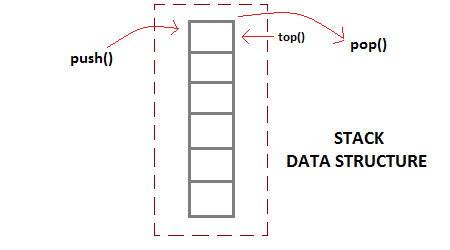Introduction of stack.
What is Stack Data Structure?
Stack is an abstract data type with a bounded(predefined) capacity. It is a simple data structure that allows adding and removing elements in a particular order. Every time an element is a, it goes on the top of the stack and the only element that can be removed is the element that is at the top of the stack, just like a pile of objects.

Basic features of Stack
- Stack is an ordered list of similar data type.
- Stack is a LIFO(Last in First out) structure or we can say FILO(First in Last out).
push()function is used to insert new elements into the Stack andpop()function is used to remove an element from the stack. Both insertion and removal are allowed at only one end of Stack called Top.- Stack is said to be in Overflow state when it is completely full and is said to be in Underflowstate if it is completely empty.
Applications of Stack
The simplest application of a stack is to reverse a word. You push a given word to stack - letter by letter - and then pop letters from the stack.
There are other uses also like:
- Parsing
- Expression Conversion(Infix to Postfix, Postfix to Prefix etc)
Mainly the following three basic operations are performed in the stack:
- Push: Adds an item in the stack. If the stack is full, then it is said to be an Overflow condition.
- Pop: Removes an item from the stack. The items are popped in the reversed order in which they are pushed. If the stack is empty, then it is said to be an Underflow condition.
- Peek or Top: Returns top element of stack.
- isEmpty: Returns true if stack is empty, else false.
How to understand a stack practically?
There are many real-life examples of a stack. Consider the simple example of plates stacked over one another in a canteen. The plate which is at the top is the first one to be removed, i.e. the plate which has been placed at the bottommost position remains in the stack for the longest period of time. So, it can be simply seen to follow LIFO/FILO order.
There are many real-life examples of a stack. Consider the simple example of plates stacked over one another in a canteen. The plate which is at the top is the first one to be removed, i.e. the plate which has been placed at the bottommost position remains in the stack for the longest period of time. So, it can be simply seen to follow LIFO/FILO order.
Thank you viewers.
This is published by soumy sinha..
If you like this then pls share with your frnds..and subscribe..
Ask your next question with your feedback in comment section..

Comments
Post a Comment